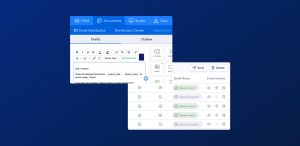1. Demo day – what to expect
Demo day’s arrived, the first vendor has fired up his laptop… what are you looking for?
First things first, accept that the demo is “artificial”. Live with it.
You need a handle on what the vendor’s software is capable of, and a demo is the best way of doing that.
It’s like the beautiful demo car in the pristine dealership that let’s you “see before you buy”.
Yes, you might fork out for a better sound system or live without some “optional extras”, but “proof of concept” is there, reassuring you that the car will live up to the promises.
Often, the toughest job is reigning in desire. Show cars are usually top of the range, all singing, all dancing affairs. Partly, to entice you into trading up but also so, whichever features you choose, you get to see them in action.
So is the software demo in front of you all singing, all dancing? When you ask questions, can the demo show you how the vendor meets your requirements?
Why would a vendor turn up with a demo that only shows half the story? Well, perhaps because the real star of the show is the slick salesman who says “we can do that with such conviction that you forget about needing to be convinced and fall for the sales patter, hook, line and sinker.
2. Fees and what to pay for
Do you really need that customized solution?
Perhaps they can’t use the demo to show you because you need a bespoke solution.
Stop and rewind. Who says you need a customized solution?
Is it the vendor who’ll earn a whole lot more cash from one?
When you buy a Ferrari, you’re unlikely to send the designers off to develop a unique solution, just for you.
Fast cars usually come with enough in-built flexibility to satisfy most customers straight out of the tin and good software should, too.
If you need to customize, then one of the following must be true:
- The software doesn’t do what it’s supposed to
- You need something unique (which is actually pretty rare)
Unique solutions cost more – in the short term, and to maintain
It’s easy to hear “unique” and feel special, but unique means a new code branch that becomes very expensive to maintain. Don’t spend unless you have to.
FinTech is the worst culprit when it comes to customizing software unnecessarily.
A really good vendor will explain why a non-customized approach – albeit a highly flexible one – is a better option and have the demo to prove what the software is capable of… straight out of the wrapper.
Implementation fees
Which brings us on to fees. Software vendors make a lot of money from upfront implementation fees.
Of course, it’s perfectly fair to charge for project management and business consulting, but if you’re paying huge fees for bespoke work, question the necessity.
3. Timescales and saying goodbye to slippage
It takes two to tango.
Most projects fail for one of two reasons:
1. The product doesn’t actually do what it is supposed to do – avoidable with some penetrating questions at the demo stage.
Or,
2. The client – yes, you! – doesn’t fulfill their side of the deal. No data. Slow to respond. Committee decisions. Internal politics. Holidays. Change requests. Internal dependencies… the list is endless.
IT slippage is an avoidable habit!
Vendors don’t benefit. They want to move on to the next project, and slow progress rarely compensates a vendor for the lost fees from a new client.
Be honest about who is causing any delays and think carefully about who stands to benefit… project teams without a new project to move onto once this one ends?
Stakeholders trying to “protect” their silo?
4. Find out in advance what BAU will look like
You’ve survived the project. Well done.
Now, it’s business as usual.
So, what happens next?
Too often, too little focus is paid to BAU during the selection process yet it actually last far longer and has far more impact than the initial development.
You’re probably going to be paying recurring fees of some sort so make sure you understand what you’re paying for.
Are there any hidden costs?How do upgrades work and do you pay for them?
What guarantees do you have about customer support and service standards?
These things prove the true mettle of a vendor, so find out what’s in store before it’s too late.
5. There really is no such thing as a free lunch
Finally, totally eliminate personal preferences and supplier charm from the selection process.
Does the product do what you want?
Do the vendor references check out?
Is the vendor stable?
That’s what counts, not free lunches or charm offensives.
Good luck!



